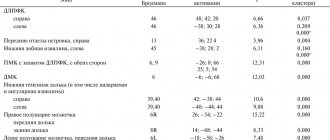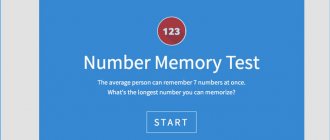Become a professional trader
The test using the Enneagram was developed at the beginning of the 20th century by the Russian mystical philosopher George Gurdjieff, and in the 1960s it was refined by psychologist Claudio Naranjo. The Enneagram is a diagram of 9 graphic images - stars with 9 rays, symbolizing 9 personality types that have developed as a result of long-term observations of people's behavior. They are a reflection of our spiritual and mental development .
One or 2-3 basic personality types predominate in one person, which are influenced by some key fears from childhood. In fact, all 9 types are present in us , but on different scales. Therefore, we recognize ourselves in several portraits at once, but to varying degrees.
This method is not recognized by all psychologists, but it is interesting to get acquainted with it for the overall picture and understanding of oneself. After all, two important components of effective trading are understanding the market and yourself, your strengths and weaknesses.
The Enneagram helps you see the limitations inherent in your personality type. Their identification should be considered as points of growth and an opportunity to get to know yourself better . But in no case as shortcomings. Each person has his own unique hierarchy of strengths and weaknesses and his own proportion of the same qualities in different combinations. They are what make us unique and different.
Depending on our personal set of qualities and the environment in which we were brought up, we unconsciously form our own model of interaction with the world around us and people - in each test result you will find a description of the model that is inherent in you to one degree or another. They are also not final or rigid, because any weakness can be covered by a strong quality or tried to be corrected if you work on yourself.
This is also part of your trading, since the stock exchange requires not only your practical trading skills, but also work on your habits and character. Namely, what in our environment is called self-discipline.
History of the Enneagram
Images of the Enneagram can be seen among representatives of ancient cultures - the Babylonians, ancient Greek thinkers. The West learned about personality typology using this model in the 20th century, this is the merit of the philosopher G. Gurdjieff. In the 1960s, philosopher Oscar Ichaso and psychiatrist and Gestalt therapist Claudio Narahano developed an adapted model of the Enneagram. Researchers have developed a universal concept on its basis, which has been transformed thanks to the contributions of different approaches and psychological schools.
The model is correlated with the classical psychoanalytic approach. The enneagram is most widespread in the United States of America; it is a complement to classical methods of psychotherapeutic work; it is used not only by psychotherapists and coaches, but also by recruiters.
Three Centers of the Enneagram
When we encounter the phenomena of our world, we react to them with our head, heart, and body. Which one do we follow? Usually we don’t ask such questions, and yet one of the centers is the leading one for every person. He can be compared to an expert who takes on complex everyday problems. Each of us unconsciously adheres to our favorite path - heartfelt, mental or mental, bodily. This does not mean that we do not involve other centers, but only one still has the palm.
Types of reactions:
1. Logics.
The reaction of the mental center is objective justification. First - observation and analysis, then - making a logical decision.
2. Emotions.
The reaction of the heart center is the need to receive emotionally charged interaction with others.
3. Instincts and intuition.
The reaction of the body center is to perceive the phenomenon from the point of view of practicality, functionality. Open interaction with others and observation of what is happening.
All three centers are involved in everyday life, but one of them is better developed. And it depends on which center is leading what a person will focus on, what skills and reactions he has. This information will help you decide what you need to work on for personal growth.
WHAT IS ONLINE TESTING
Online testing is an Internet version of the sociomental test for diagnostics and correction of lifestyle of Tamara and Anatoly Panchenko
If you have opened this page, it means that you already know about eniostyle and want to determine your type.
You will need to be tested 6 times! And then, based on the description of this page, build a type formula.
IMPORTANT!!!
Many have tested and ask questions like:
“Somehow this doesn’t look like me! What to do?"
WE'LL HELP YOU UNDERSTAND THE RESULTS AND Suggest WHERE TO MOVE NEXT
We offer you a free consultation based on the test results. Just write to us at [email protected] or call 8-916-902-7131 (WhatsApp, Viber).
Enter your nickname on our website and we will discuss the results of your test via Skype.
Igor and Irina Ozhiganov, senior trainers of Eniostyle
A LITTLE THEORY - LIFESTYLE STYLES BASED ON ENIOSTYLE
Tamara and Anatoly Panchenko have established that the quality of our life does not depend on the amount of money, love, power, freedom. There are people who are happy without it all, and there are people who are unhappy with it in abundance. It’s just that everyone needs their own, determined by their way of life, and their relationship to themselves, money, love, power and freedom. The image-styles of life in Eniostyle are “called” by the countries of the world: North, South, West, East. The combination of these styles may be different in each person. One may value order and logic in life; we say he is north. The other one values human relationships more, we say he is south. The third will give everything for power, we say - the West. The fourth cannot live without freedom, we say - the East. Of course, the test determines not by one or two criteria, but by a whole bunch of questions. Moreover, it shows the relationship between North and South, West and East. As you read the test questions, you will begin to understand how different these lifestyles are.
GENERAL DESCRIPTION OF THE ONLINE TEST ENIOSTIL
This test is built on the principle of dichotomies (opposites): day - night, winter - summer, man - woman, blond - brunette, etc. The test also presents a large number of pairs of opposites (statements, quotes) from various areas of life. Your task is to choose the statement that most often guides you in your life.
When performing the test, choose answers intuitively, spontaneously, without logical calculation, since the first choice is the most truthful.
This test consists of three parts (tests A, B, C).
Test A includes questions based on complement relations:
on the vertical scale North(N) - South(S) (Test A North-South)
on a horizontal scale West (W) - East (E) (Test A West-East).
Test B includes questions based on conflict relationships:
a) Test B North-East; b) Test B West - South.
Test C consists of questions based on comfortable relationships:
a) Test C East - South; b) Test C West - North.
The “Am I horizontal or vertical” TEST helps clarify the formula.
Take the test “Am I horizontal or vertical”
PROCEDURE FOR PASSING THE ONLINE TEST ENIOSTIL
1. First take Test A North-South, write down the result. 2. After this, take Test A West-East, write down the result. 3. Based on the results of Test A, determine two weak functions (more details in the “Calculating Results” section). 4. Take the Weak Feature Comparison Test. Write down the result. 5. Construct a formula of your own type: first put the “letter” from step 3, which scored fewer points, in the last 4th place in the formula; then find which “letter” in test A it was with (north-south or west-east), in the second place in the formula put the complement of the 4th from test A; then from the remaining version of test A, put the “letter” that scored more points in the first place in the formula, and the “letter” that scored fewer points in the third place in the formula.
6. Take the “Am I horizontal or vertical” test. If you are horizontal, you should put east or west first, if you are vertical, north or south.
Thus, you need to pass at least 3 out of 6 tests.
It happens that 3 tests do not give an answer. In this case, take all six tests and be sure to sign up for a free consultation.
Please study the examples below carefully to understand how the test results are calculated.
CALCULATING RESULTS
Each answer is worth 2 points for the first metaphor in the dichotomy, and 0 points for the second metaphor.
For example, if you always choose North in Test A North-South, you will end up with 100 points.
For example, if you always choose South in Test A North-South, you will end up with a score of 0.
For example, you scored 72 points on this test. This means that the north in you is expressed by 72%, the south by 28%.
Scores in other tests are calculated in the same way.
EXAMPLES OF CALCULATION OF PSYCHOLOGICAL FORMULA TYPE ACCORDING TO ENIOSTYL
Example 1
For example, in Test A West-East you scored 30 points. This means that the west in you is expressed by 30%, the east by 70%. We select for further testing a test that compares the minimum values from the North-South pair and the West-East pair. For our case, this is Test B West-South. Let's go through it. Let's say you received 58 points. This means that you are 58% West, 42% South. We select the function with the minimum number (this is painful) - South. We put it in last place.
We get xxxYu.
In second place (creative function) we put the function opposite to the painful one from the complementary pair. In our example this is north.
We get xCxYu.
From the second pair of functions, we select the one that won Test A and put it in first place in the formula - the leading, software function. This is the East
We get VSkhYu.
In third place (role function) we put the opposite of the first in addition. Test A. This is the West.
We get EVERYTHING.
Example 2
Stage
| Result | North | South | West | East | |
| 1. Pass Test A North-South | 6 | 6% | 94% | 0 | 0 |
| 2. Pass Test A West-East | 24 | 0 | 0 | 24% | 76% |
| 3. Select by lower numbers Test C West-North | 58 | 42% | 0 | 58% | 0 |
| 4. We build a formula: Functions | 0 | Ve-du-shaya | Creativity | Role-playing | Painful |
| Formula: from point 3 we put the small number North (42%) in last place, which means South - in 2nd place. From the East and West according to point 2, we put the East (76%) in 1st place, the West (24%) in 3rd. Formula: VYUZS | 0 | East | South | West | North |
The result is a lifestyle: East-South-West-North
Example 3. Understand the stages yourself: why in the 3rd stage Test C East-South
| Stage | Result | North | South | West | East |
| 1. Test A North-South | 80 | 80% | 20% | 0 | 0 |
| 2. Test A West-East | 64 | 0 | 0 | 64% | 36% |
| 3. East-South Test | 60 | 0 | 40 | 0 | 60% |
| 2. Functions | 0 | Leading | Creative | Role-playing | Painful |
| Formula | 0 | West | North | East | South |
The result is a lifestyle: West-North-East-South
IF YOU HAVE ANY QUESTIONS
We offer you a free consultation based on the test results. Just write to us at or call us at 8-916-902-7131. Enter your nickname on our website and we will discuss the results of your test via Skype or email.
Best regards, Igor Ozhiganov
How to determine the leading center?
To do this, I suggest you take a mini-test and answer 2 questions:
1. What need is most pressing for you?
a) acceptance by others, attention from others, good grades and good relationships with people;
b) security, predictability of the future, control over the situation, predictability of events;
c) respect, respect for personal boundaries, the need for people to consider me.
2. Which emotional reaction is more typical for you?
a) shame. How often do you feel embarrassed, ashamed, when it seems to you that people are not evaluating you the way you want or when you are not accepted?
b) fear. How often do you feel anxiety, fear, sensation or anticipation of impending trouble?
c) anger. How often do you experience anger, irritation, anger towards other people because of violation of your boundaries, disagreement with your opinion?
Mini-test to determine your Enneagram type
To get reliable results, you need to study and follow the following recommendations:
• choose one section in each group of statements that best relates to your reactions and behavior;
• you do not have to completely agree with every statement/word in the selected section. It is enough to agree that the information in this section is at least 80% true. It is important to accept all statements as applying to you in comparison to others.
Try to feel agreement with the tone and general philosophy of the section you have chosen. You have the right to categorically disagree with some proposals. But don't reject it just because one statement doesn't match you. Consider the big picture.
• listen to the first internal response and do not double-check your choice. Stop at the section that your inner voice tells you, even if you don’t consciously agree with the consistency of all the statements. The general concept of perception of a section is more important than the perception of individual components; trust your inner instinct;
• if the choice is very difficult, select both sections, but only in one group;
• record results in writing and review interpretations after the test.
Group 1:
A. I am an independent, persistent person.
: I always realize that life is better if I am fully armed. I set goals, devote myself completely to my work and strive to ensure that everything succeeds. I don’t like to mark time - I wish for great results. I don’t look for conflicts, but I won’t allow others to put pressure on me. Basically I know what I want and I do it. Often I work hard and difficulties do not stop me.
V. I’m calm, I’m used to deciding everything myself
. I usually don’t attract the attention of others, I don’t strive for self-affirmation. I am uncomfortable in leading, leading positions; I don’t like competition like those around me. People tend to think of me as a dreamer - images/feelings are born in my imagination. I know how to be quiet, I don’t feel the need to be active.
S. I am responsible and devoted
. I feel bad if I fail to fulfill my obligations and promises. I do what others expect from me. I want those around me to understand that I am here for them, I will do everything I can for them. I often sacrifice my interests for the sake of others, whether they know it or not. I often don’t pay enough attention to myself—I do what needs to be done, and only then allow myself to rest. During the rest period I do what only I want.
Group 2:
X. I am a person with an optimistic outlook on life.
, I believe that everything is going for the better. I find something to do with myself, where to direct my energy. I love to be surrounded by others, make them happy - I happily share my optimism and good mood. I don’t always feel good, but I try not to show others my bad mood/well-being. There have been times in my life when I put off solving personal problems because I remained positive.
Y. I react emotionally to what is happening.
, many people think that I am often upset about something. I'm cautious around others, but I'm more sensitive than I like to be. I want to be sure of who I am at one with, who I can rely on, while for many around me it is clear what kind of relationship they have with me. When I feel bad, I want others to experience the same experiences as me. I know what to do, but I don’t want to be taught, I want to make decisions myself.
Z. I am a person who has a lot of control over himself,
acts based on logic. I don’t lose my temper, I don’t give in to emotions. I am a perfectionist, I prefer to be an independent player. When conflicts and problems arise, I solve them without emotions. People think of me as a distant, cold person, but I just don't want my emotions to influence my decision making. I do not allow others to know my reactions.
Test: Find out which personality type predominates in your mind
Our personality is not static - it changes all the time. A test based on the Enneagram method will help you understand what type you currently have. It captures the present moment. Over time, the personality type can change - it all depends on the environment, beliefs, and work on oneself.
What motivates you?
Who upsets you?
What is the first thing people notice about you?
Where do you prefer to spend your weekends?
Which of these historical figures inspires you the most?
What is your main vice?
What do you want from life?
What environment do you work best in?
What is your birth month?
What is your most common mood?
Quiz: What is your ennea personality type? Winner
You work hard and persistently, achieving everything in life yourself. You want to be the best in everything that pushes you forward to accomplish new feats. When you are in a bad mood, you do not regret, but criticize yourself, but it is better not to do this - you are alive, you don’t need to blame yourself.
Reformer
You have an innate passion for excellence in all areas of life - from career to family. You know you will only get the best, so you don't settle for mediocre offers. You hate corruption, imbalance and lack of efficiency. You are often seen as arrogant or hypocritical, when in fact you sincerely want to change your life for the better. Be patient and trust yourself.
Enthusiast
You have an inner wisdom that pushes you forward to greater achievements. You plan everything and foresee the consequences, turn to the future. Because you are afraid of being faced with choosing the wrong action, you always think things through. You have great ambitions that make you work. You don't sit back and try everything!
Assistant
It is important for you to be loved and loved, they trust you, and in return you help everyone. Your fears are being left unnoticed or losing the potential to help. You are modest, shy when praised in public, you do not need fame - just a little appreciation. You have deep emotional intelligence that can be compared to that of Mother Teresa.
Perfectionist
You are demanding of yourself, afraid of any manifestations of anger, and often strive to prove that you are right. Others value your high ideals, commitment, integrity and punctuality.
Share your achievement with friends:
Show embed code
Test: Find out what psychological trait forms the basis of your personality?
Test: Find out what your character and personality type is by behavior in various situations









